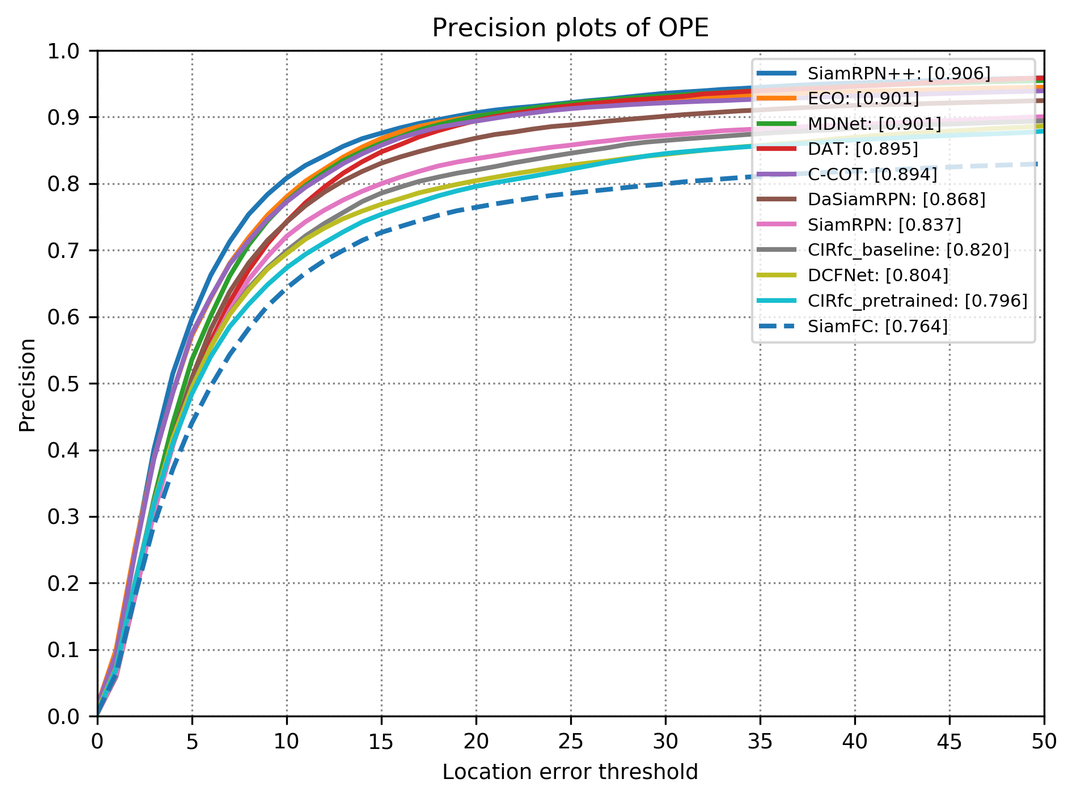This is a Pytorch implementation of SiamDW with train codes, which is mainly based on deeper_wider_siamese_trackers and Siamese-RPN. I re-format my code with reference to the author's official code SiamDW.
For more details about the CIR tracker please refer to the paper: Deeper and Wider Siamese Networks for Real-Time Visual Tracking by Zhipeng Zhang and Houwen Peng.
NOTE: The author proposed CIR/CIR-D unit into both SiamFC and SiamRPN, repectively denoted as SiamFC+ and SiamRPN+. Currently this repo only contained that of SiamFC+ and SiamRPN+ with backbone ResNet22 and others will be listed into future work.
The repo is still under development.
- python == 3.6
- pytorch == 0.3.1
- numpy == 1.12.1
- opencv == 3.1.0
-
data preparation
-
Follow the instructions in Siamese-RPN to curate the
VIDandYTBdataset. If you also want to useGOT10K, follow the same instructions as above or download the curated data by author. -
Create the soft links
data_curatedanddata_curated.lmdbto folderdataset.
-
-
download pretrained model
-
Download pretrained model from OneDrive, GoogleDrive or BaiduDrive. Extracted code for BaiduDrive is
7rfu. -
Put them to
models/pretraindirectory.
-
-
chosse the training dataset by set the parameters in
lib/utils/config.py.For example, if you would like to use both
VIDandYTBdataset to trainSiamRPN+, then just simply set bothVID_usedandYTB_usedintoTrue. -
choose the model to be trained by modifying
train.sh, e.g, to trainSiamFC+using commandCUDA_VISIBLE_DEVICES=0 python bin/train_siamfc.py --arch SiamFC_Res22 --resume ./models/SiamFC_Res22_mine.pthor to train
SiamRPN+byCUDA_VISIBLE_DEVICES=0 python bin/train_siamrpn.py --arch SiamRPN_Res22 --resume ./models/SiamRPN_Res22_mine.pth
-
data preparation
- Create the soft link
OTB2015to folderdataset
- Create the soft link
-
start tracking by modifying
test.shas above
- OTB2015
[1] Zhipeng Zhang, Houwen Peng. Deeper and Wider Siamese Networks for Real-Time Visual Tracking. Conference on Computer Vision and Pattern Recognition (CVPR). IEEE, 2019.

